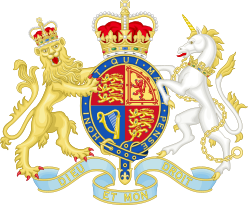| Chief Justice of Supreme Court of Tasmania | |
|---|---|
 Royal Arms used by the Supreme Court of Tasmania | |
since 20 January 2025 | |
| Supreme Court of Tasmania | |
| Style | Chief Justice (informal) Your Honour (within court) The Honorable (formal, if sworn of the Tasmanian Executive Council) |
| Status | Chief justice |
| Member of | Judiciary of the State of Tasmania |
| Seat | Tasmanian Supreme Court Building, Hobart |
| Nominator | Attorney-General of Tasmania |
| Appointer | The governor of Tasmania with Executive Council and Cabinet deliberation |
| Term length | None Mandatory retirement at 75 years of age |
| Constituting instrument | The Supreme Court Act 1887 |
| Formation | 1887 |
The chief justice of the Supreme Court of Tasmania is the senior judge of the Supreme Court of Tasmania, and the highest ranking judicial officer in the Australian state of Tasmania. The chief justice is both the judicial head of the Supreme Court as well as the administrative head, responsible for arranging the business of the court and establishing its rules and procedures. The current chief justice is Chris Shanahan, whose appointment was announced in 2024 by the Tasmanian Attorney-General. Justice Shanahan, who succeeded Alan Blow, who had been Chief Justice since 2013, assumed office on 20 January 2025.
Contents
Due to an age limit changed at the request of Chief Justice Blow, the incumbent chief justice must retire upon reaching the age of 75.
The chief justice also holds the role of lieutenant governor of Tasmania.